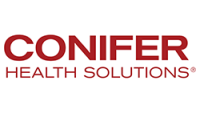Cutting through the clutter: Practical strategies to reduce administrative waste in payer-provider interactions
Administrative costs in healthcare continue to rise, often consuming more resources than direct patient care. Nowhere is this more visible, or more solvable, than within revenue cycle management (RCM).
These costs are not just a patient care concern; they strain the workforce and directly impact financial sustainability. Much of the challenge stems from a persistent disconnect between providers and payers, which disrupts the financial signals leaders rely on to operate efficiently.
Understanding the cost of administrative waste
Administrative waste represents the cost of tasks that fail to advance patient care. In RCM, these include activities such as prior authorizations, appeals, payment posting and eligibility checks, especially when these processes are repetitive or manual.
According to the 2024 CAQH Index, automating just nine common RCM transactions could save the U.S. healthcare system more than $20 billion annually. Prior authorizations and claim status inquiries alone account for billions in avoidable costs. Other research estimates that overall administrative waste across healthcare exceeds $900 billion annually — roughly a quarter of total healthcare spending.
Such inefficiencies destabilize the revenue cycle, forcing organizations into a reactive mode and making it harder to manage both financial and operational risks.
Reducing administrative waste doesn’t require sweeping industry reform, it requires targeted, disciplined action in key areas. The following four strategies offer immediate, operational improvements that healthcare organizations can begin implementing now.
Strategy 1: Streamline prior authorization processes
Prior authorization remains one of the most significant bottlenecks in RCM, diverting resources from patient care. The core problem is structural: each payer has unique requirements, few of which are integrated into ordering systems, leaving staff to chase approvals through outdated methods.
Integrating authorization checks directly into the clinical workflow can significantly reduce rework. When requirements are identified in real time, before an order is placed, approvals move faster. This integration works best when data is current, rules are embedded and alerts reach the right teams at the right time.
Accuracy on the front end is equally critical. Many delays stem from incomplete or incorrect requests, making staff training an ongoing operational priority. Measuring turnaround times, tracking payer delays and monitoring service line impacts give leaders the data needed to intervene effectively.
Strategy 2: Improve denials prevention and resolution
Claim denials signal breakdowns that disrupt cash flow and divert staff toward avoidable rework. Addressing them begins with transparency: organizations need to know which payers and service lines generate the most denials, and why.
However, visibility is not enough, denial data must circulate across departments. Insights from billing should inform patient access processes and clinical documentation at the front end. Without this feedback loop, errors become recurring patterns.
High-frequency denial types, such as those related to medical necessity or missing documentation, benefit from standardized handling procedures. Consistency reduces preventable denials and minimizes the need for appeals. When appeals are necessary, automation can accelerate response times, improving the odds of reversal and limiting operational disruption.
Strategy 3: Simplify Payment Reconciliation and Remittance Handling
Even after billing, the revenue cycle can stall during payment reconciliation. Delays and posting errors often result from fragmented systems and inconsistent processes.
Auto-posting tools that work with standardized Electronic Remittance Advice (ERA) files can streamline this process by matching payments to accounts automatically and flagging exceptions for review. This reduces manual work, improves accuracy and frees staff to focus on true discrepancies.
Reducing complexity also matters, consolidating payer remittance channels lowers error rates and standardizes workflows. Real-time dashboards that track payment lag times and variance trends give RCM leaders actionable insights for timely intervention.
As with other areas of the revenue cycle, effective reconciliation depends on well-trained staff who can interpret remittances accurately, identify recurring issues and escalate problems efficiently. Strong reconciliation practices strengthen forecasting and restore control over the financial close process.
Strategy 4: Foster stronger collaboration between payers and providers
Technology can streamline processes, but it cannot replace human collaboration. Reducing administrative waste often requires direct coordination between payers and providers, especially when processes involve shared responsibilities.
Regular, targeted meetings focused on operational pain points such as recurring denial patterns or unclear submission guidelines, can reveal issues that day-to-day interactions miss. While value-based care models naturally encourage this collaboration, even fee-for-service arrangements can benefit from clear expectations and consistent turnaround standards.
Collaboration may not eliminate administrative work entirely, but it can make it more predictable, less contentious and easier to manage.
Waste not, want not
Administrative waste is a systemic issue, entrenched in outdated workflows that no longer serve the people who use them. When delays and workarounds become routine, and staff spend more time fixing problems than advancing care, the cost is too high to ignore.
The solution is not to rebuild from scratch but to target weak points with purpose. Audit workflows to pinpoint inefficiencies. Invest in the tools and training needed to resolve them. And stop accepting inefficiency as inevitable. Reducing administrative waste is one of the few strategies that improves both efficiency and quality of care — benefiting patients, staff and financial performance alike.






